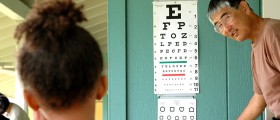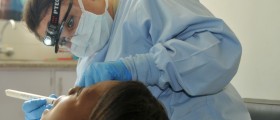
Before opting for LASIK surgery a person must undergo thorough eye examination. This way a doctor can determine whether a person is suitable candidate for the surgery.
People who have required a change of prescription for the spectacles or contact lens in the past 12 months are considered refractive unstable and are not suitable candidates for the surgery. Furthermore, patients suffering from diabetes may also have fluctuations in vision and are due to discuss a suitable timing for the surgery. Effectiveness of the procedure has not been investigated in people suffering from other illnesses but it is clear that some diseases and medications can affect wound healing.
Examination prior the Surgery
Prior the procedure and in order to estimate whenever the patients is suitable candidate for LASIK surgery a doctor performs thorough eye examination. This way he/ she determines the health of the eyes and specific type of vision correction that needs to be performed. The doctor routinely uses a refractor to determine a person's prescription, a slit lamp to check the retina and a tonometer to measure the pressure inside the eye. A corneal topographer is used to photograph the eye and map the cornea. This is essential since none of us has perfect-shaped cornea and this part of the eye shows a variety of irregularities.
The LASIK Surgical Procedure
There is difference between some types of LASIK surgery and Non-Excimer laser procedure. The surgery does not last long (approximately less than a minute) and a patient is awake during the entire procedure. He/ she is only mildly sedated prior the surgery.
LASIK eye surgery and PRK (photorefractive keratectomy) are the two most common refractive surgery procedures. LASIK surgery is performed with the assistance of an excimer laser. A knife called a microkeratome cuts the flap in the cornea leaving a hinge at one end of the flap. After being folded the flap reveals the middle section of the cornea. Predetermined section of the stroma is vaporized with pulses from the computer controlled laser. The process reshapes the cornea and changes its focusing power.
Epi- LASIK surgery is more suitable for people with less steep corneas. After creation of the flap, it is lifted and removed out of the way. The underlying corneal tissue is sculpted with an excimer laser. What follows is placing back of the epithelial flap on the eye with the assistance of a spatula. The procedure is not painful since the person receives special eye drops that anesthetize the operated area. The edges of the corneal flap completely heal in 24 hours. The eye may be irritated for the first few days and the pain may occur. It is brought under control with painkillers. The entire recovery lasts approximately 2-7 days.

















Your thoughts on this
Loading...